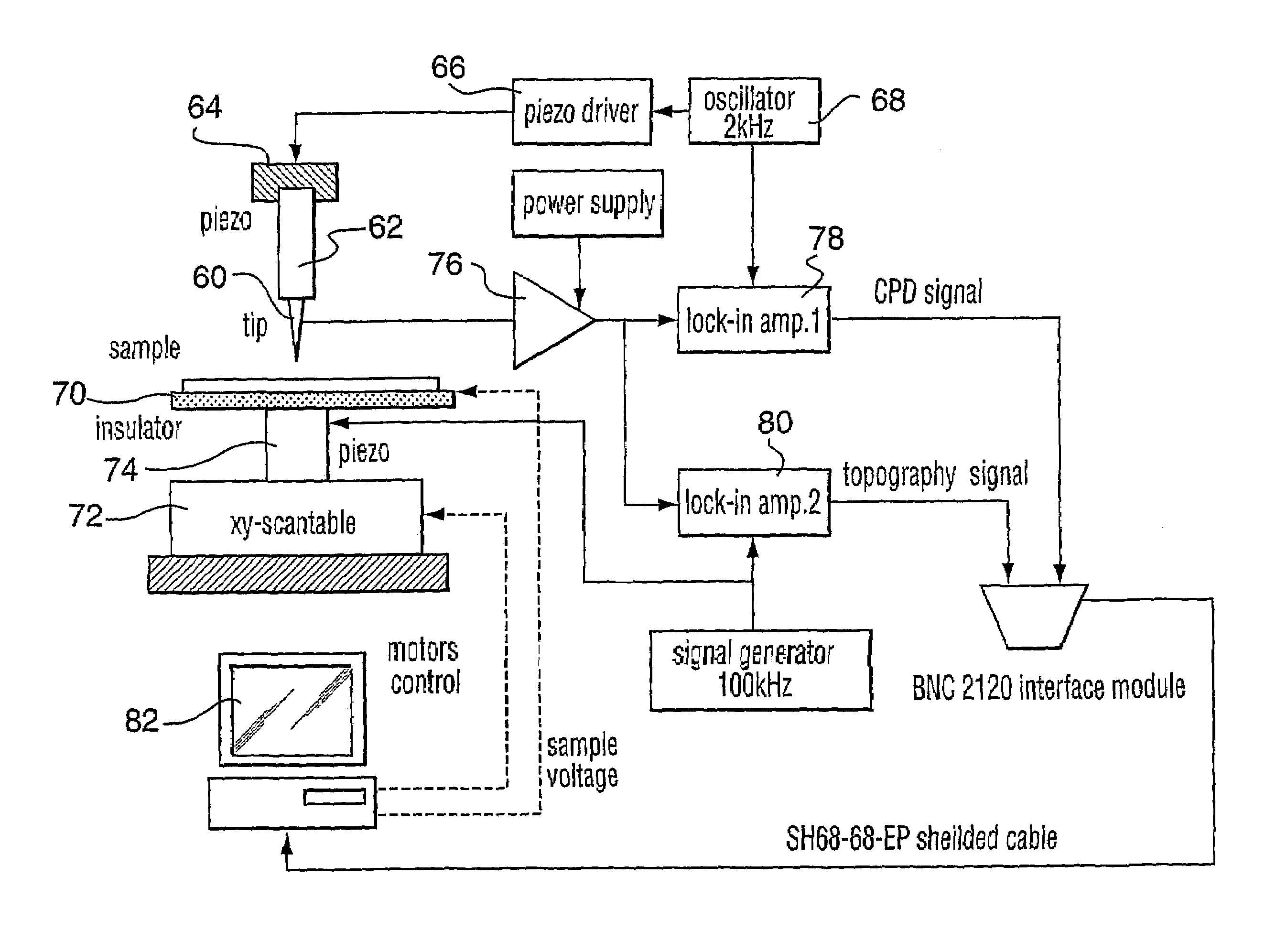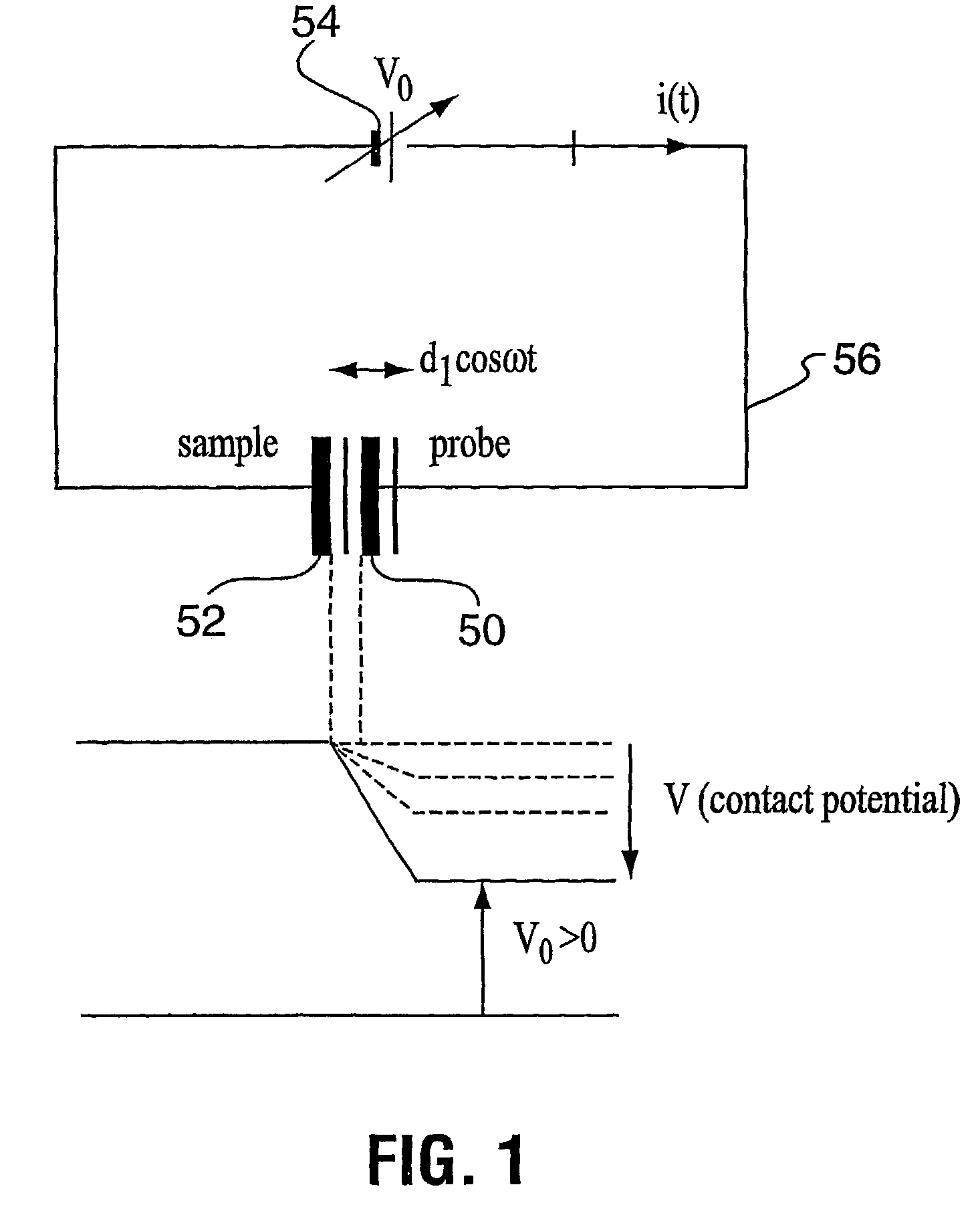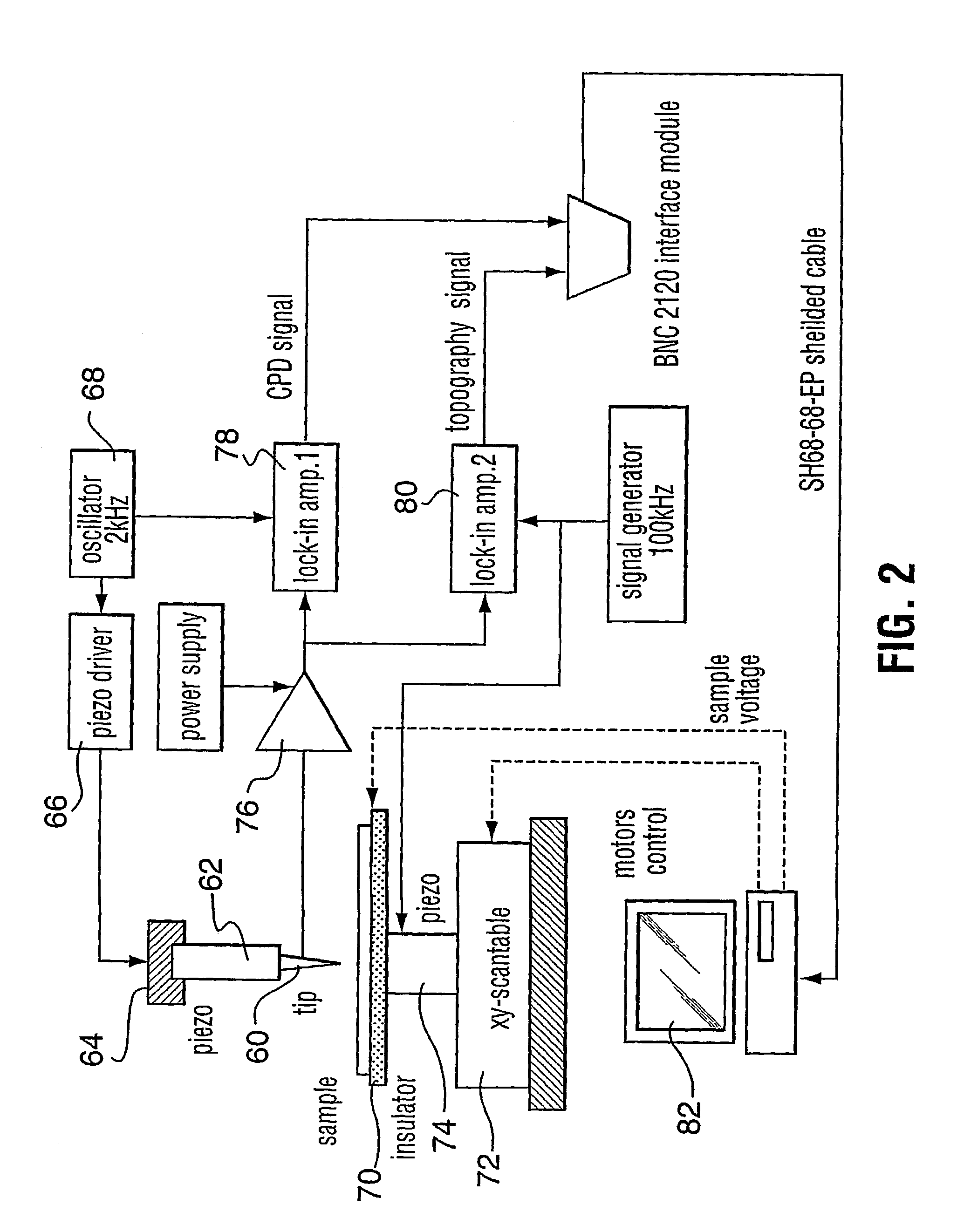Scanning kelvin microprobe system and process for analyzing a surface
- Summary
- Abstract
- Description
- Claims
- Application Information
AI Technical Summary
Benefits of technology
Problems solved by technology
Method used
Image
Examples
example 1
Characterizing Metals
[0079]A number of metallic surfaces including Pt, Au, Ag, Sn, Pb and Al are examined. Patterned surfaces are obtained by sputtering of Pt layers on Ag and Si, Au layers on Pd and Ag, and metals on silicon and mica substrates.
[0080]FIG. 4 illustrates a CPD image obtained from a silver surface. FIG. 5 is a CPD image of a silver surface after surface treatment. FIG. 6 is a CPD image of silver on a mica surface. FIG. 7 illustrates the topography of silver on a mica surface.
example 2
Characterizing Conductors
[0081]Highly ordered-pyrolitic graphite samples are analyzed. FIG. 8 illustrates the topography of a graphite surface. FIG. 9 is a CPD image of a highly-ordered pyrolitic graphite surface.
example 3
Microelectronic Fabrication
[0082]FIGS. 10A and 10B show a measure of the capabilities of the instrument by providing a tandem measurement of topography and CPD. FIG. 10A depicts a topographical image of the edge presented by a layer of aluminum deposited on a silicon wafer in a typical microelectronic fabrication process. The edge is supposed to be vertical with a steep height of about 1 μm. This particular topographical image was realised at a spatial resolution of 2 μm. Note that the second axis represents (in V) the displacement of the piezoelectric table and for 1V the piezoelectric material expands 20 μm. Accordingly, the aluminum layer appears to have a surface height variation of about 400 nm (0.02V). Secondly, it can be seen that the edge actually slopes over 20 μm (x-axis). FIG. 10B shows a tandem CPD image. Note that the image is both rotated at 90° and inverted in order to highlight the difference in contact potential between aluminum and silicon (the flat, bottom surface...
PUM
 Login to View More
Login to View More Abstract
Description
Claims
Application Information
 Login to View More
Login to View More - R&D
- Intellectual Property
- Life Sciences
- Materials
- Tech Scout
- Unparalleled Data Quality
- Higher Quality Content
- 60% Fewer Hallucinations
Browse by: Latest US Patents, China's latest patents, Technical Efficacy Thesaurus, Application Domain, Technology Topic, Popular Technical Reports.
© 2025 PatSnap. All rights reserved.Legal|Privacy policy|Modern Slavery Act Transparency Statement|Sitemap|About US| Contact US: help@patsnap.com



